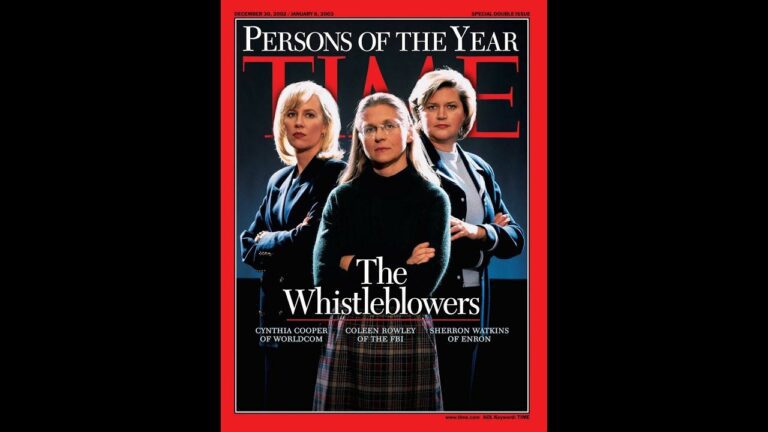On Reality Asserts Itself, Ms. Foroohar says the legalization of stock buybacks in 1982 allowed companies like Apple to now spend only 15% of their investments on R&D, while the majority is spent on market manipulation; the Financial Times columnist and author of “Makers and Takers” said the move from traditional pensions to 401k’s makes everyone feel they benefit from finance when the vast majority of profits go to the elites and most people’s living standards deteriorate – with host Paul Jay. This is an episode of Reality Asserts Itself, produced May 9, 2018.
STORY TRANSCRIPT
PAUL JAY: Welcome to The Real News Network. I’m in New York City and this is Paul Jay and Reality Asserts Itself.
Rana Foroohar is an associate editor and global business columnist for The Financial Times. She’s also CNN’s global economic analyst and she joins us in the studio. Thanks for joining us Rana.
RANA FOROOHAR: Thanks for having me.
PAUL JAY: So one argument is that this is a natural spontaneous process. That when you start to have massive industrialization and massive needs of capital it changes the character the banks. The banks have to play a more significant role. There’s way more capital needed. And then banks become kind of more the center of activity than sort of the supplier, supplier of capital.
RANA FOROOHAR: Well, it’s interesting. I mean, you’re raising an important point, which is that when an economy gets bigger, when countries get bigger, and this happened to the British when they were becoming colonialists, and you need more money in order to conquer new empires, yeah, banks do play a role. And in fact, banks and governments tend to get very tightly in bed with each other around about that time.
And one of the things that I try to explore in my book is how Washington and Wall Street together created this problem. That this isn’t just, you know, a bunch of bankers kind of in a vacuum figuring all this out themselves. Finance is governed by certain rules that are set in Washington, and what I’m arguing is that if you go back to the late ’60s early 1970s there were changes happening in the U.S. economy. So if you look at where we were then, it had been 20 years or so of the post-war period of prosperity. The U.S. was no longer just on the global stage by itself as it had been right after World War II. You know, we kind of had the game to ourself. Europe was on its knees. The emerging markets hadn’t really emerged yet.
By the ’70s that was starting to change and U.S. trend growth was actually slowing. And at that point, politicians had a decision to make about what interest groups they were going to prioritize. Were they going to fund a war? Or were they going to work on social service programs at home? And you know, the kind of guns and butter debate, really, that you know, you hear about from back then. And they didn’t want to make those decisions, because politicians tend to not want to make decisions in which they have to give tradeoffs between voter groups.
And so what they did was they sort of threw the ball to the financial markets, and we started to see a process of deregulation. And it was a 40-year process. So there’s not one single silver bullet here, but we can go through a few of the high points. A 40-year process in which the Federal Reserve was given more and more responsibility for keeping markets afloat. The markets became a much more important part of how people saw their own wealth. We had the cult of personal finance. And if you remember the 1980s all these magazines like Money and Smart Money, my mother used to get them. People moving from a fixed pension system to a retirement system, a 401k. We were all kind of in this together, and we were pushed in this direction by Washington. And Wall Street was only too happy to play the game.
PAUL JAY: But also Washington pushed by Wall Street.
RANA FOROOHAR: Absolutely. And so at the same-.
PAUL JAY: A process where finance really asserts itself.
RANA FOROOHAR: That’s right. And it’s, and it’s, as you said before, it’s a revolving door. So if you look over that time, the financial sector starts to become the key lobbying body in Washington. You know, it’s interesting. If you, if you go in the last 40 years and you see how much finance spends in various years, it’s almost always you’ll see a peak when there’s a piece of legislation that’s of interest. Whenever you start to see a rollback or questioning of financial power you’ll see this flood of money being pushed into Congress, into lobbying, into think tanks. And you know, over 40 years you get a system in which the financial sector is in charge of what, a lot, of a lot of what’s happening.
PAUL JAY: A big turning point takes place under Reagan.
RANA FOROOHAR: Yeah sure.
PAUL JAY: Legislatively. Which I think is also a reflection of that. You’ve pointed out in your book, and I’ve seen this graph of finance as a percentage of GDP. And it goes it goes up, up, up to about 1929-30, you have the crash, and then it goes down in the ’30s. And I guess because of the enormous public spending during World War II it’s still kind of down. After World War II it starts to go up. And then in 1980 it’s a rocket ship which has not stopped its mission to space yet.
RANA FOROOHAR: It hasn’t really stopped. Exactly, exactly.
PAUL JAY: So talk about the early ’80s. Yeah. So there was sort of two things happening. And this actually reflects the way in which my book covers financialization. There’s kind of two parts of it. There’s what’s happening in the financial markets themselves. And then there’s the effect of that on the rest of business and in corporate America.
So under Reagan there was a huge unleashing of Wall Street. First of all, we had the notion that government was bad, right? All government could do was cut taxes. So government goes onto the back burner. The private sector moves forward. Wall Street in particular is unleashed. But the ties between Wall Street and corporate America deepen. I would point to one particular ruling that I think doesn’t get nearly enough attention, and that is the 1982 shift under John Shad during the Reagan administration to let stock buybacks become legal.
So stock buybacks are when a company goes into the open market and buys back its own shares, which always artificially pushes the price of shares up because it reduces the number of the shares on the market. So before 1982 this was considered financial market manipulation. I mean, how can you be allowed to, you know, really artificially change the price of your shares without doing anything really underlying in the real economy. After ’82 that was made legal.
You can immediately start to see the size of the asset base on Wall Street rising. You can start to see corporations spending a lot more money doing those share buybacks and paying out executive compensation in shares, and spending less money on R&D, worker training, repairs on factories, investments into new technologies. And in fact, you can almost make a direct X mark, and I have this chart in my book, showing buybacks going up, R&D going down. And then this gets another kick in the pants in the 1990s when the tech titans start to lobby for even looser rules around how compensation can be tax deductible. And under the, under Bill Clinton’s administration, treasury Secretary Bob Rubin who himself went in and out of Wall Street, he was the head of Citibank for a while, loosened up rules around Comp. There was a debate at that time around inequality. People were, people like Joe Stiglitz, for example, who sat on the president’s economic advisory.
PAUL JAY: Clinton.
RANA FOROOHAR: Under Clinton’s, yeah, under President Clinton’s economic advisory team, was very concerned about growing wealth inequality and the effect that that was going to have not just socially, but on the economy. You know, if you don’t have more money to spend than you are going to have slower growth.
So he was sounding off about this. The Rubin camp, the Larry Summers camp, the more kind of financialized part of the party was saying no, we should actually, you know, unleash these animal spirits and these innovators and, and allow them to pay more of their comp in stock performance based pay which could then be tax deductible. This would be paid out in shares. And then again you start to see this process where buybacks go up, R&D goes down.
PAUL JAY: Here is another excerpt from “Makers and Takers:”
“In the spring of 2013, Jobs’s successor as CEO of Apple Inc., Tim Cook, decided the company needed to borrow $17 billion. Yes, borrow. Never mind that Apple was the world’s most valuable corporation, that it had sold more than a billion devices so far, and that it already had $145 billion sitting in the bank, with another $3 billion in profits flowing in every month. So, why borrow? …
“Apple would not actually have to touch its bank accounts, which aren’t held someplace down the street like yours or mine. Rather, they are scattered in a variety of places around the globe, including offshore financial institutions. (The company is secretive about the details.) If that money were to return to the United States, Apple would have to pay hefty tax rates on it, something it has always studiously avoided … Apple didn’t need that money to build a new plant or to develop a new product line. It needed the funds to buy off investors by repurchasing stock and fattening dividends, which would goose the company’s lagging share price …
“Apple’s behavior is no aberration. Stock buybacks and dividend payments of the kind being made by Apple—moves that enrich mainly a firm’s top management and its largest shareholders but often stifle its capacity for innovation, depress job creation, and erode its competitive position over the longer haul—have become commonplace. The S&P 500 companies as a whole have spent more than $6 trillion on such payments between 2005 and 2014, bolstering share prices and the markets even as they were cutting jobs and investment. Corporate coffers like Apple’s are filled to overflowing, and America’s top companies will very likely hand back a record amount of cash to shareholders this year.
“Meanwhile, our economy limps along in a ‘recovery’ that is tremendously bifurcated. Wage growth is flat. Six out of the top ten fastest-growing job categories pay $15 an hour and workforce participation is as low as it’s been since the late 1970s. It used to be that as the fortunes of American companies improved, the fortunes of the average American rose, too. But now something has broken that relationship. That something is Wall Street.”
PAUL JAY: Talk about Apple in that context.
RANA FOROOHAR: So this is the lead, lead chapter of my book. And you know, it’s kind of interesting. I was looking for my first chapter, for the most Kafkaesque example that I could find of how the financial markets today work. And really what I came up with was Apple. Apple is the wealthiest company in U.S. history, probably in the history of the world. And at the time that I wrote the book it had about 200 billion dollars in cash sitting in overseas bank accounts. It’s more now. It’s around 300 billion.
PAUL JAY: To avoid tax.
RANA FOROOHAR: To avoid tax. Exactly.
PAUL JAY: They would do this thing where they would transfer royalty rights, say to a company in Ireland, and they’d pay their own company in Ireland a royalty, and they’d transfer the money overseas.
RANA FOROOHAR: And we’d need a whole other hour to cover the logistics of that. But you know, read the Panama Papers. You kind of, you kind of get an idea about it. So they had all this money sitting in overseas bank accounts. But they wanted to use the very low interest rates that we had following the financial crisis to take debt, issue their own debt, and then use that money that they had raised on the public markets in the U.S. to pay back the wealthiest shareholders. People like, you know, Carl Icahn, for example, corporate raider. He had nothing to do with the iPhone, I can assure you. But at the time he owned a large chunk of Apple stock, and he kept tweeting, you know, every few weeks saying Apple should do more share buybacks. Apple should do dividend payments.
So it was borrowing a lot of money on the U.S. markets in order to pay back people like Carl Icahn. Meanwhile, offshoring revenue and keeping it away from tax coffers of the government that actually funded the basic research that made this company what it is today.
PAUL JAY: So the Internet, smart technology.
RANA FOROOHAR: GPS, touchscreen. I mean, all that came out of out of DARPA and the Pentagon. You know, other countries, just as a side note, other countries, Israel, some of the Scandinavian countries, actually take stakes in firms when they are able to commercialize basic research. And that’s something the U.S. may want to consider.
So you have the situation where a company that is more involved in markets than ever before in history actually doesn’t need any cash. How can that be a good thing?
PAUL JAY: Sitting on not just mountains of, universes of cash, and then they go and borrow, what was it, 14 billion dollars?
RANA FOROOHAR: 14 billion. And I mean, actually it’s far, far beyond that. Now, I don’t have the latest figures, but the amount of debt that was issued by this firm is roughly equal to the amount of cash they have sitting abroad. So you’ve got a debt bubble being cooked up over here. You’ve got tax revenue that could be paying for things like education or infrastructure or, you know, training up a 21st century workforce that won’t be displaced by Foxconn robots over here. And that’s simply not good for the real economy.
PAUL JAY: And they’re borrowing the cash to do stock buybacks.
RANA FOROOHAR: That’s right. And they’re borrowing the cash to do buybacks and increase the inequality gap that was the problem to begin with. By the way, since I’ve written this book, this problem has grown epically. And it’s very interesting. The Republican tax plan that just went through under the Trump administration, you know, one of the big selling points for this tax plan was, Oh, there’s all this cash abroad. We’re going to lower rates and these companies are going to bring back this cash and invest it on Main Street.
Well, for starters, a lot of that cash isn’t cash. It’s in bond portfolios that are in those offshore bank accounts. Well, these companies have to sell those bonds in order to bring any of that money back. What do we think that that’s going to do to the financial markets? Possibly destabilize them. Has anybody thought about that, talked about it? Not really.
PAUL JAY: And I know one of the counter arguments are going to be, but as you said, with people’s retirement plans now being in this, mostly in personal investment portfolios, and so on, everyone benefits from this, don’t they? And as I throw you a softball, because I know where it’s going to go.
RANA FOROOHAR: Well, you know, it’s funny. It’s a softball and not, because in the sense that, I mean, I have a 401k. We’ve all kind of bought into this Faustian deal where we don’t look too close at how the sausage is made because we all feel wealthier when our share prices go up. And in fact it’s interesting, Goldman Sachs itself came out with a report a few weeks ago saying that they now think that about 30 percent of U.S. GDP growth is based just on that perception of wealth. So people’s sense that their assets are way up here fuels their spending, which then represents economic growth. But if they feel that there’s been a correction, the market goes down, that’s growth that could go away.
PAUL JAY: The argument is so many people are in the markets now, everyone benefits when they go up like this. 80 percent of the profit from the markets is actually going to, what, less than a percent of the population?
RANA FOROOHAR: Well, you know, if you look at the overall share ownership in this country, asset ownership, basically 80 percent of stock is owned by 20 percent of people. And the bulk of that 80 is owned by the top 1 percent. So when you talk about the markets going up, as politicians always do. It amazes me. On both the left and the right, frankly, people say the markets are great, the economy is great. Well, those things are a little bit different. The markets being great is great for, frankly, not to sound too Marxist, but you know, the owners of capital. Which is, you know, basically the top 20 percent.
PAUL JAY: OK. Well, on that Marxist note we’ll pick that up in the next segment. Please join us for the next in our series of interviews with Rana Foroohar on The Real News Network.






